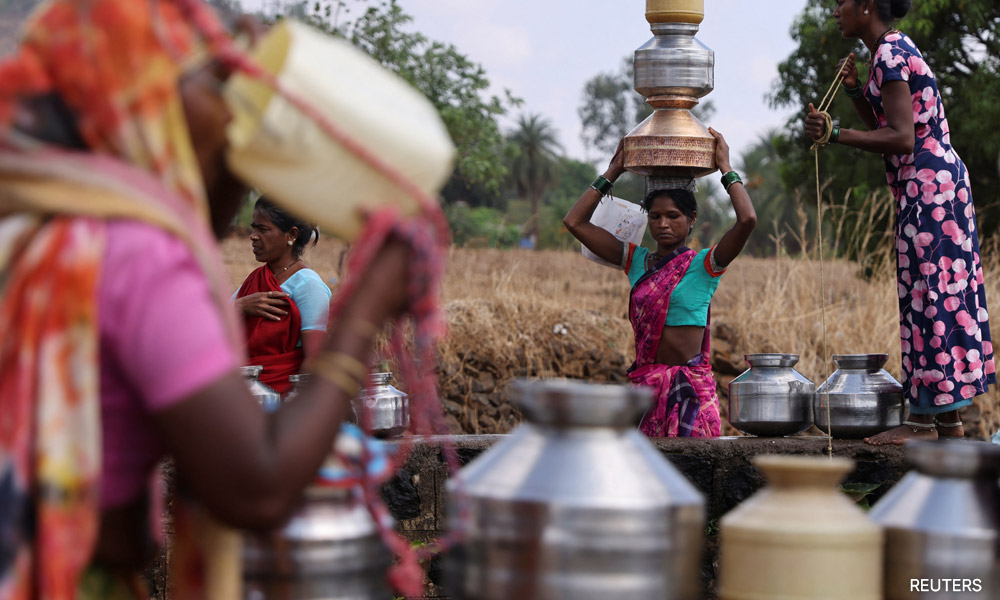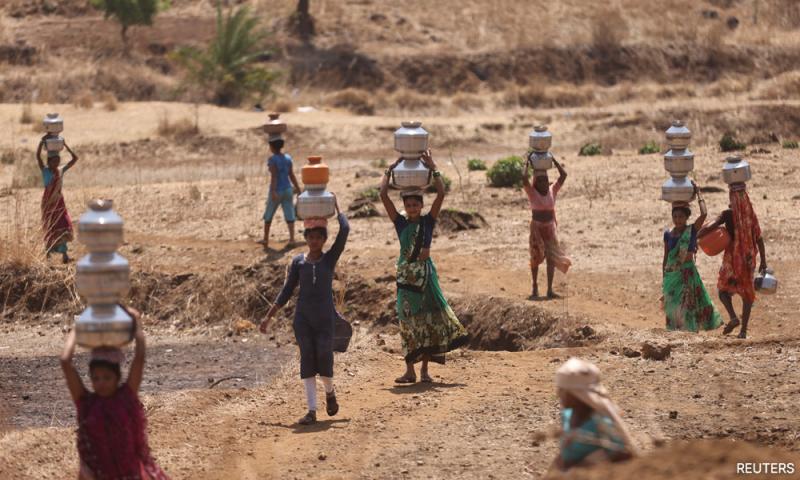Women, children trek miles in summer heat to get water near India's Mumbai
Women and children in a hamlet near India's financial capital of Mumbai, India, use buckets to draw water from a well before pouring it through strainers into vessels and other receptacles for the journey home.
The scene unfolding during a recent visit by Reuters to the area, just 150km from the metropolis, plays out every summer morning after residents have trekked more than a mile to fetch water from a dried-up well filled each day by tankers.
Even though their homes are not far from a dam that provides water to the sprawling city, villagers say supplies run short from March to May every year.
This is when temperatures can run as high as 40 degrees Celsius before monsoon rains bring respite in June.
"All the water is sent to Mumbai, we are left with nothing," said Ashok Shinde, whose village is home to about 700 people rearing poultry and livestock.
"The government encourages us to breed animals but what will we give them to drink if we don’t have any water to drink ourselves?"
The Vaitarna dam, which supplies water to Mumbai, is just 50km from Telamwadi but is not linked to it.
India ranks among the world's most water-stressed nations, the World Bank says, with just 4 percent of global water resources, despite being the world's most populous, accounting for 18 percent of the global population.

Authorities in India's most prosperous state of Maharashtra, home to both the village and Mumbai, say they expect to finish work on an alternative supply source for Telamwadi by next summer.
"Until the permanent solution is in place, we are providing water tankers to ensure residents do not face issues," state water supply officials said.
Water for Telamwadi and nearby settlements will eventually come from a dam on another river, the Bori, the officials added, adding that water would flow to the area naturally as the dam was located at a higher altitude.
Until then, residents will have to depend on daily tanker supplies arranged by the government in summer, when the well, about 2km away, dries up completely.
"We use a strainer to make sure no solid waste goes in," said one of the villagers, Suman Bhutambare.
But when the implements sometimes fall in, someone must clamber in and descend a harrowing 4.5m to 6m to retrieve them.
One of the women usually makes the perilous journey, relying on numerous cracks in the walls to provide support.
"It's very risky, as there’s a chance of slipping and falling," Bhutambare added.
- Reuters
RM12.50 / month
- Unlimited access to award-winning journalism
- Comment and share your opinions on all our articles
- Gift interesting stories to your friends
- Tax deductable

 Reuters
Reuters